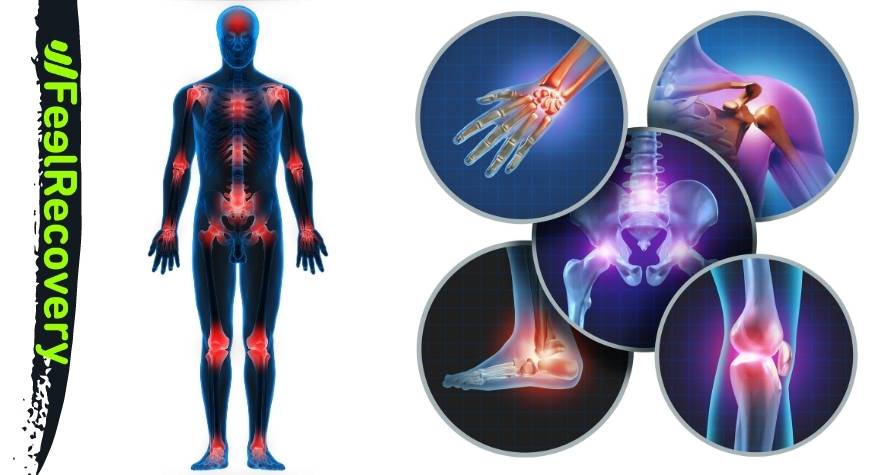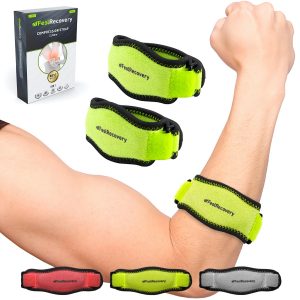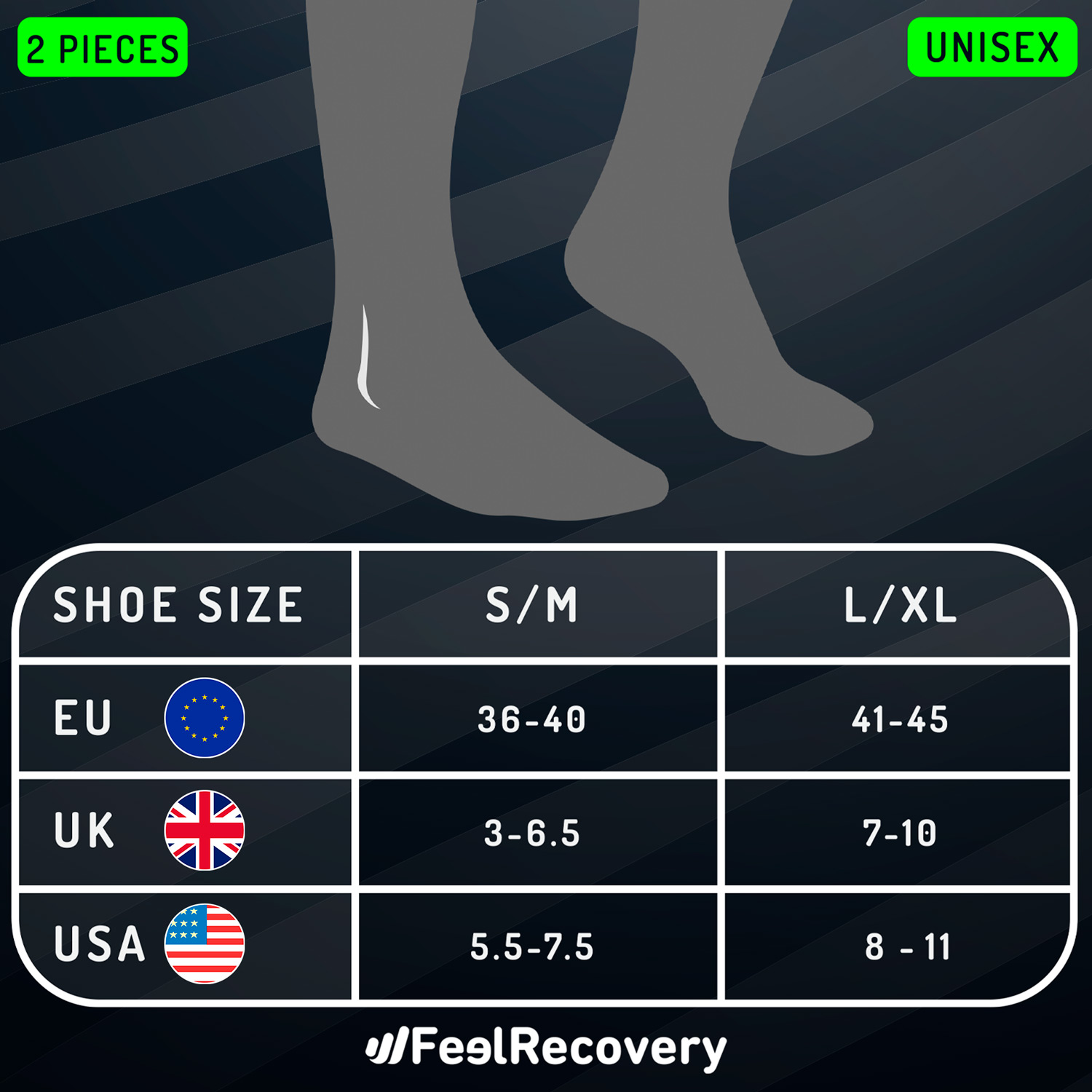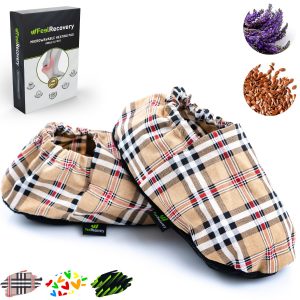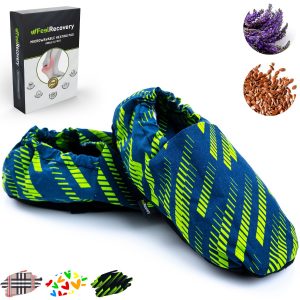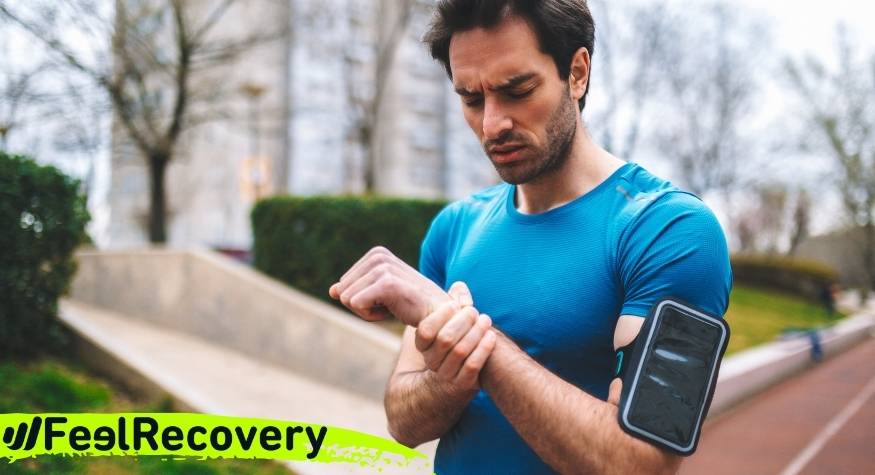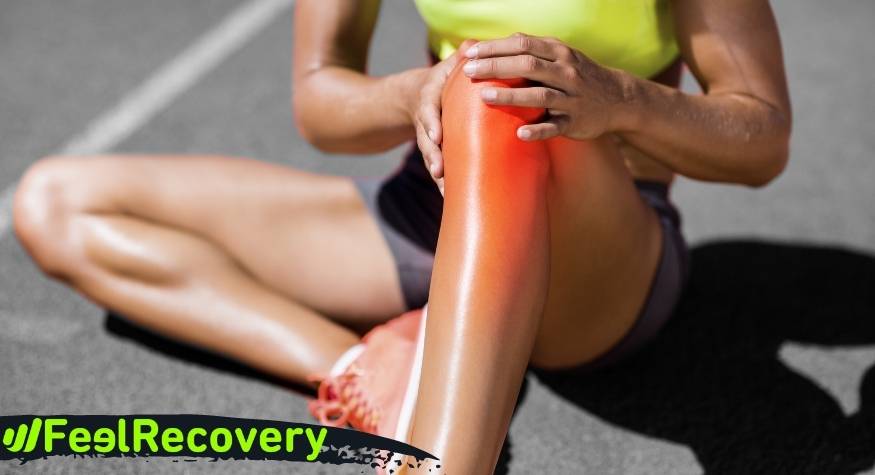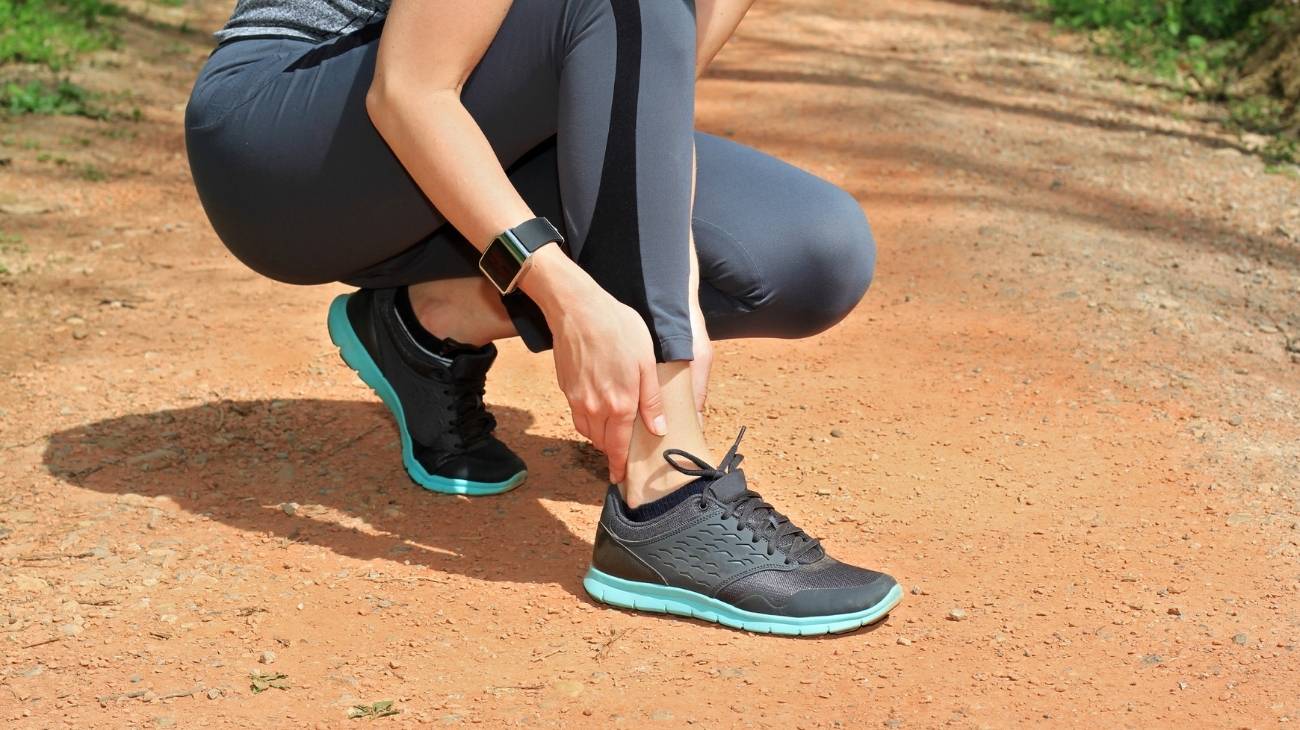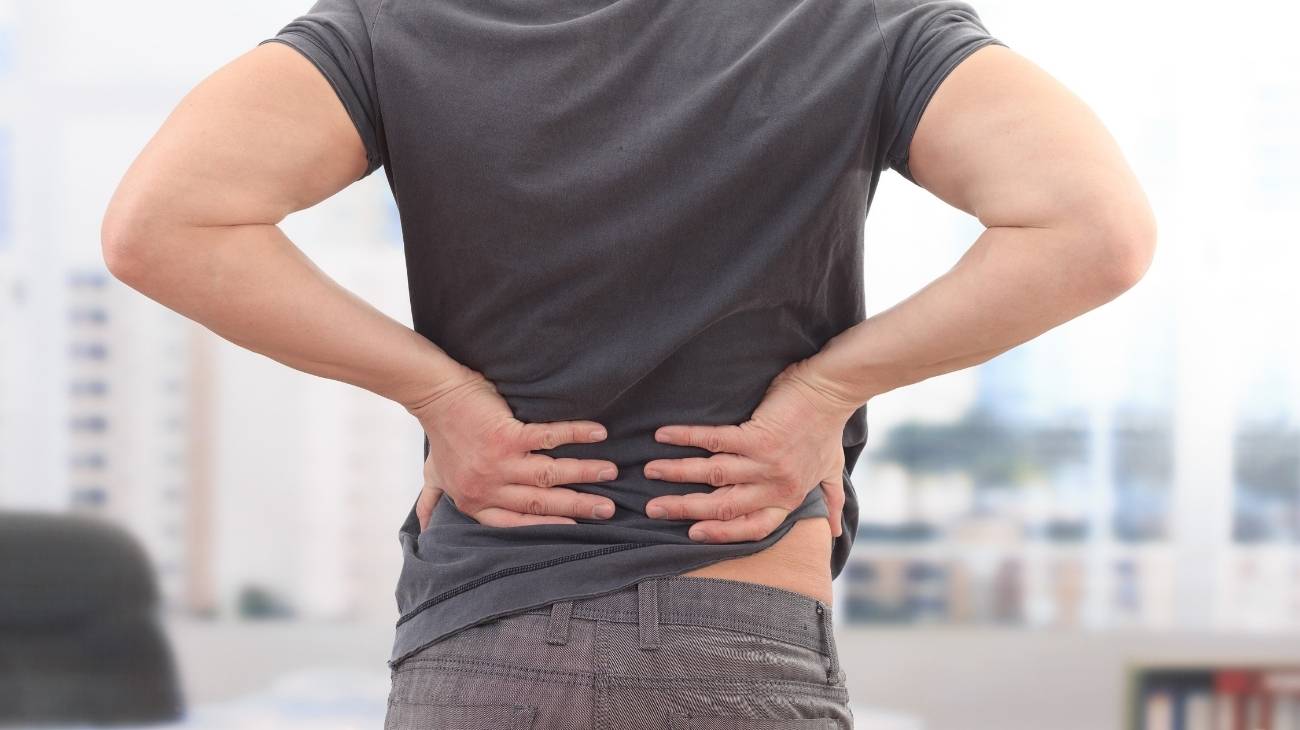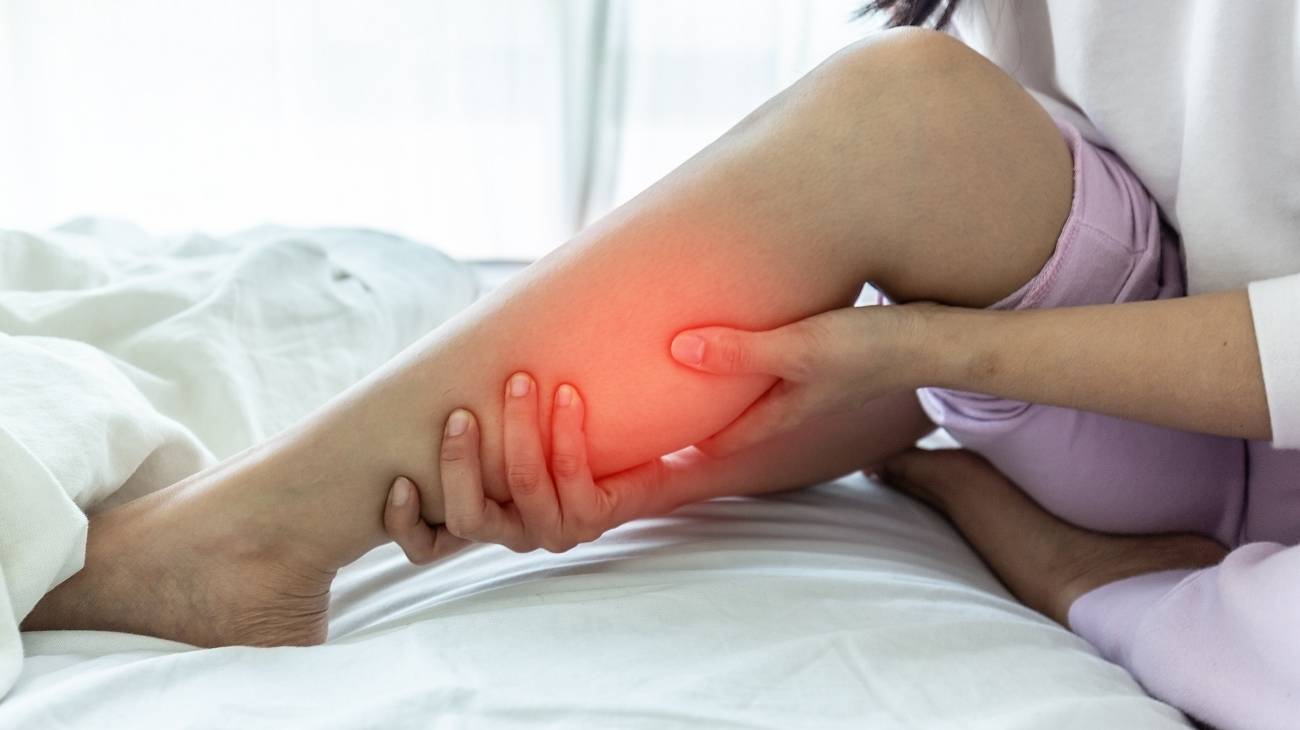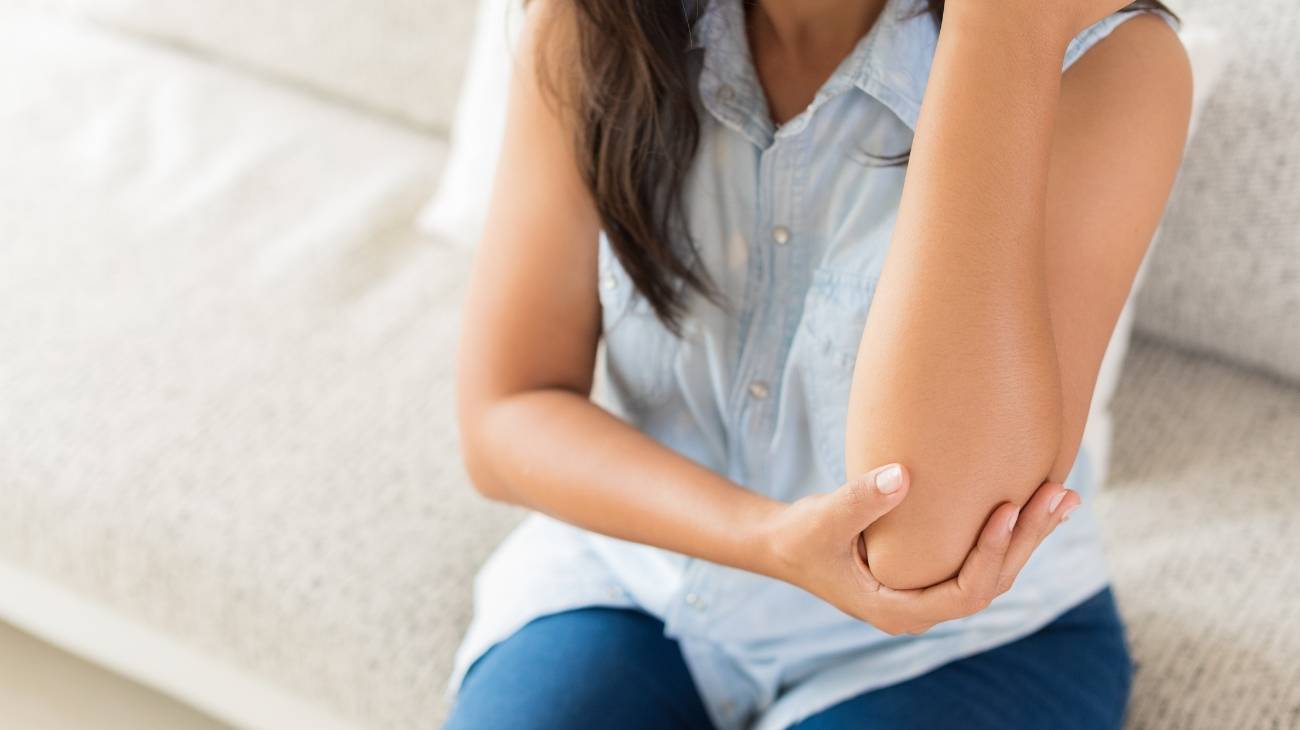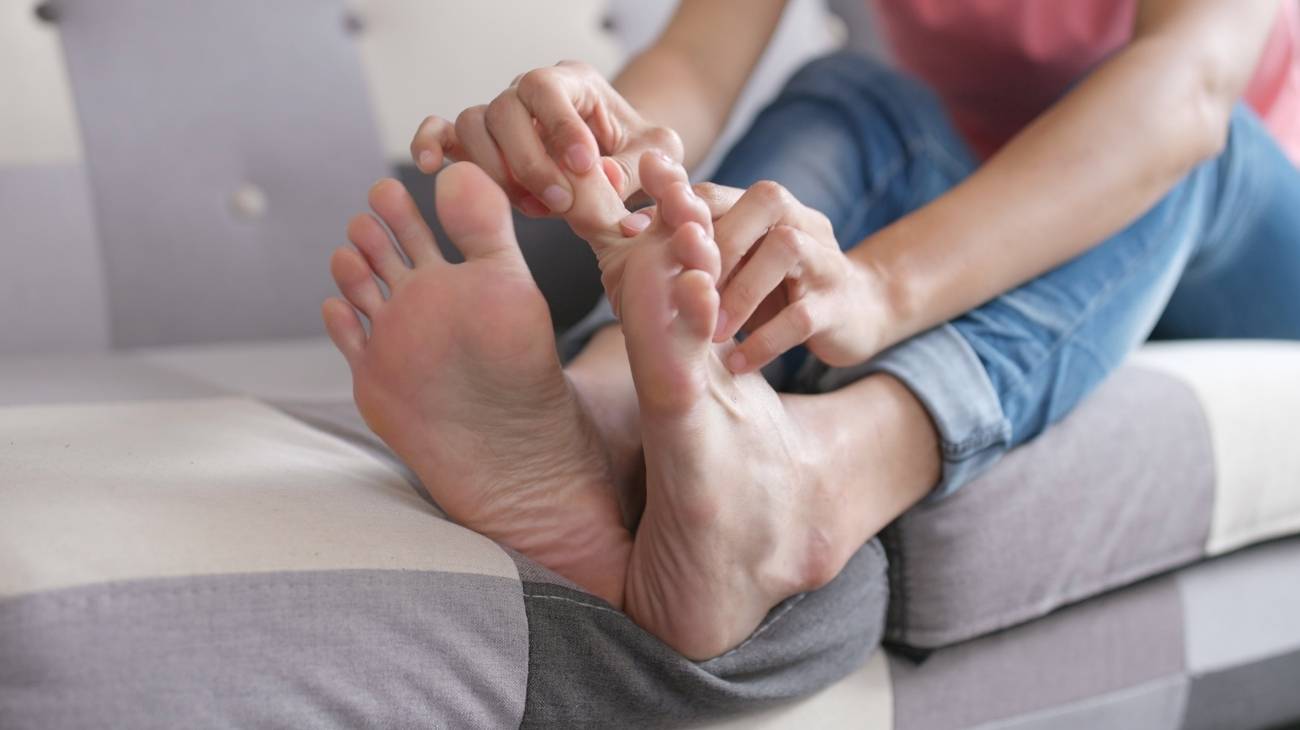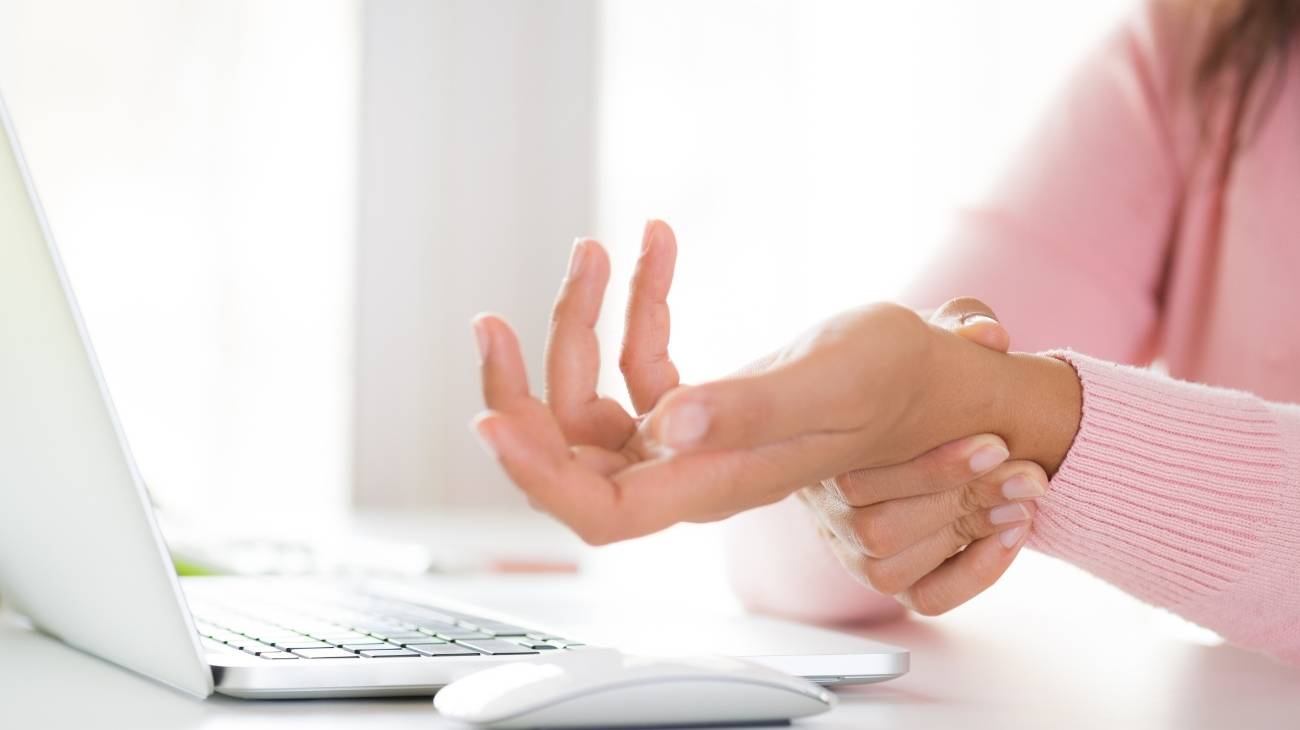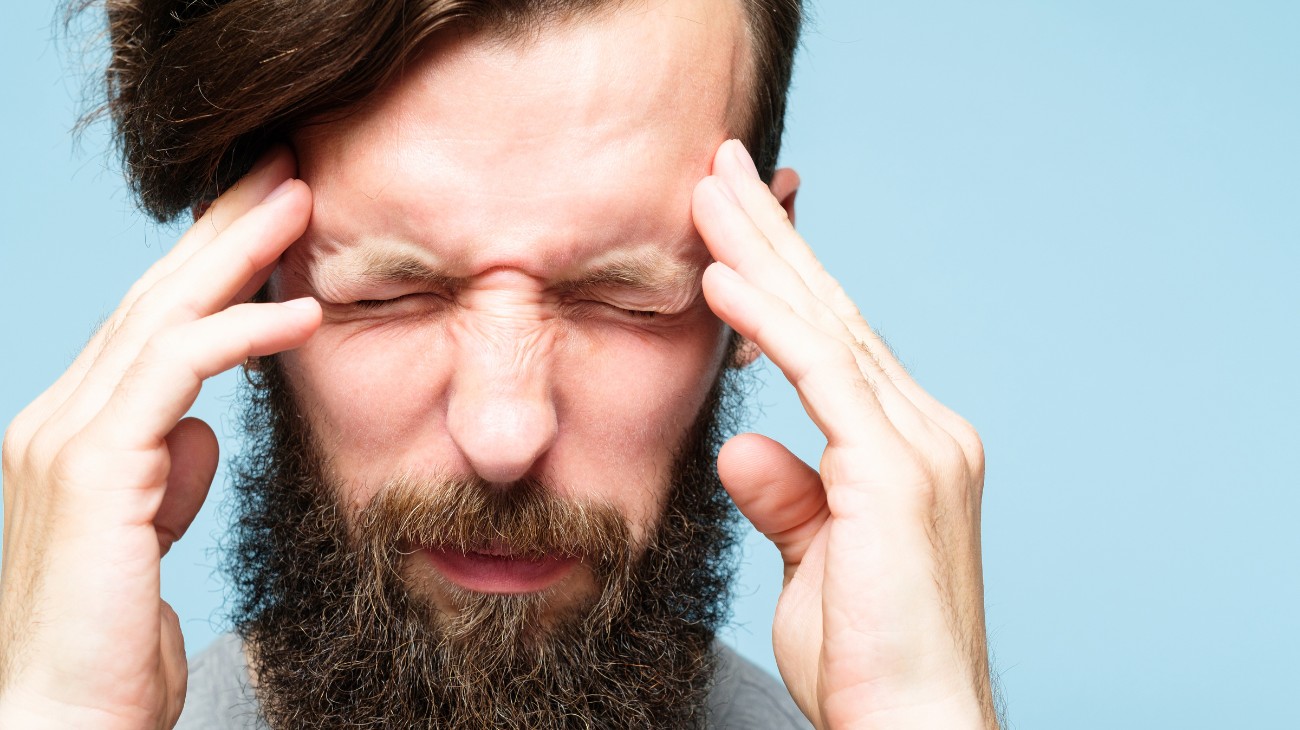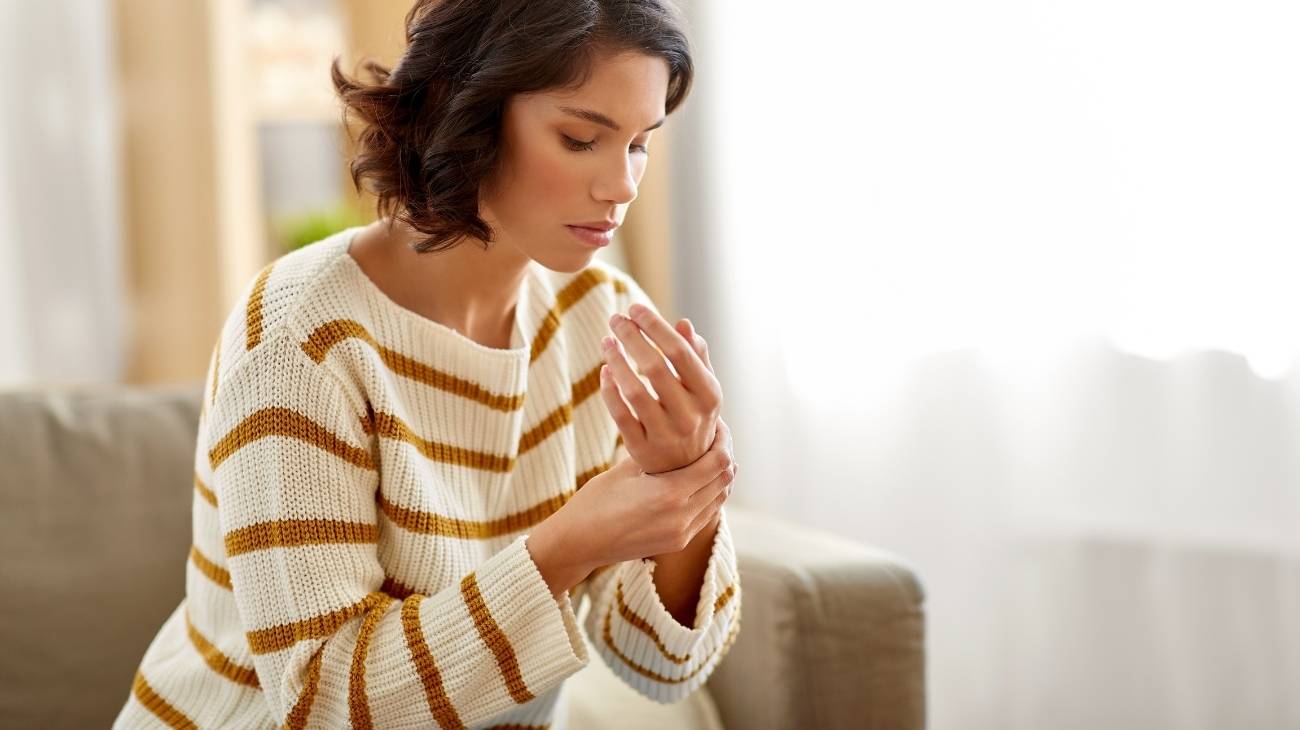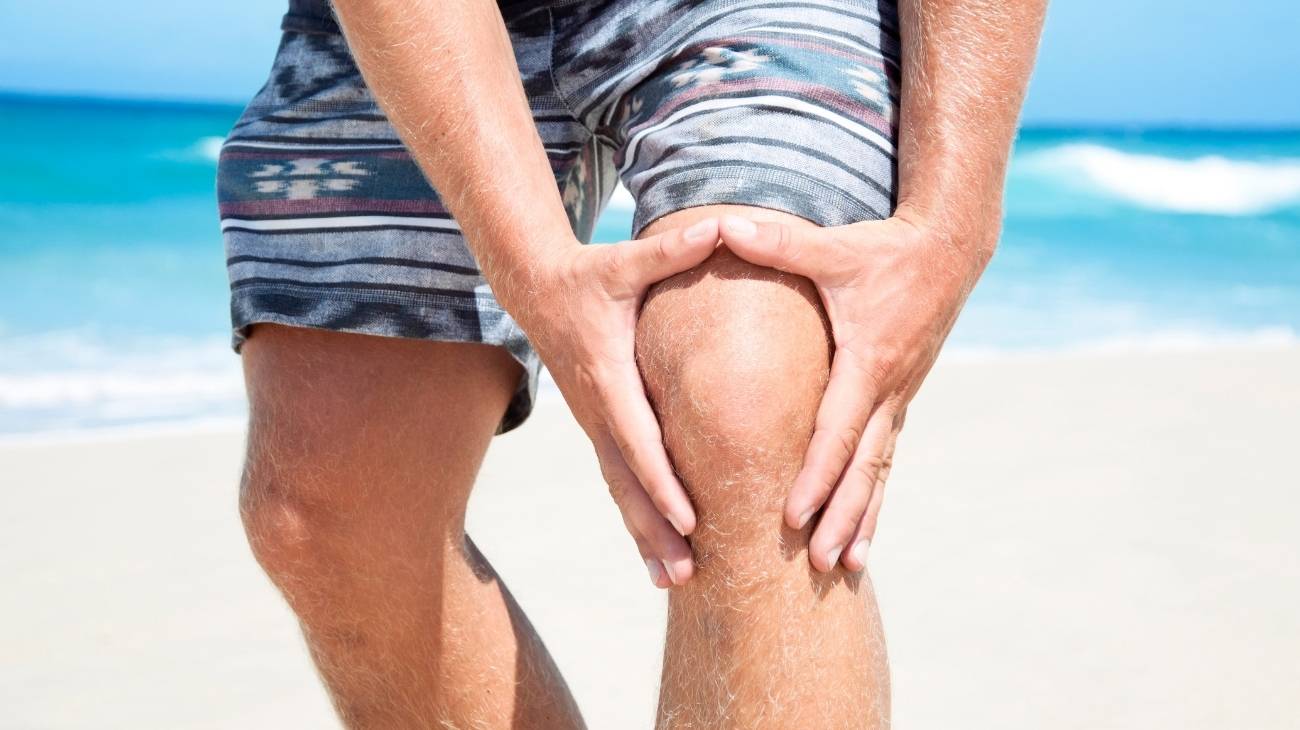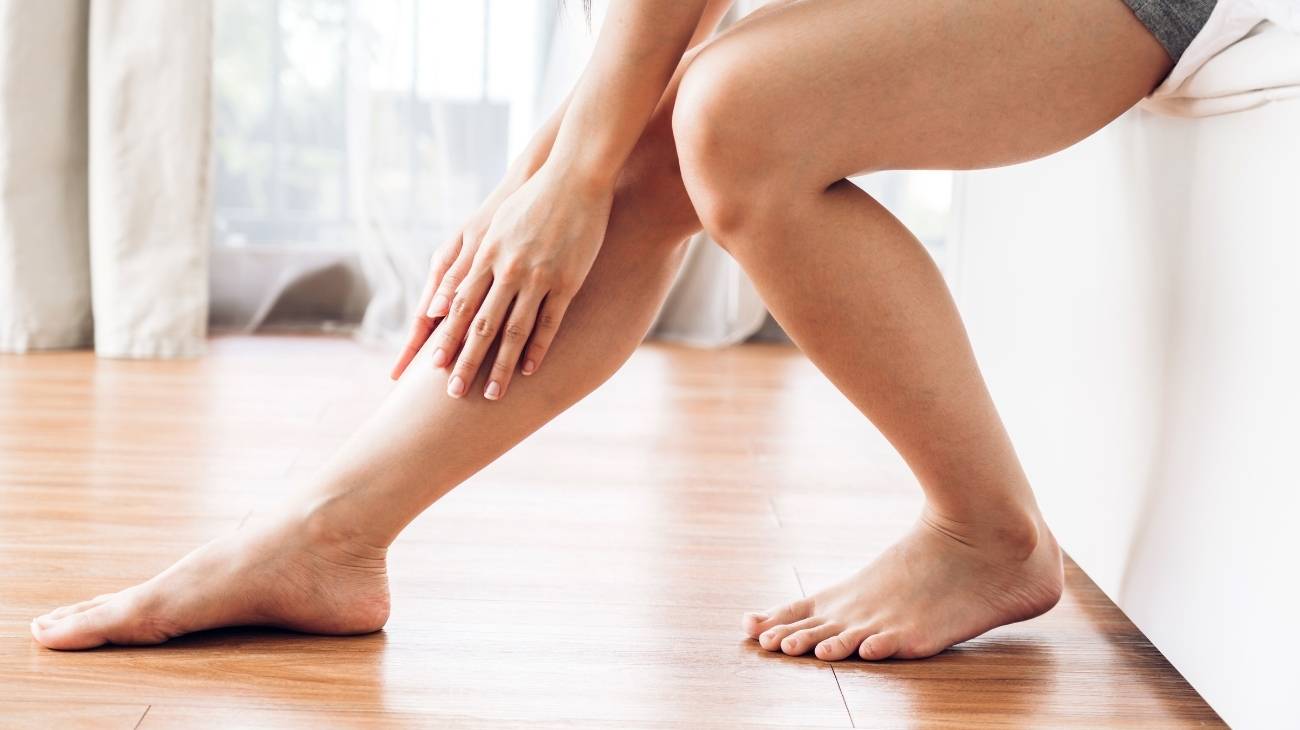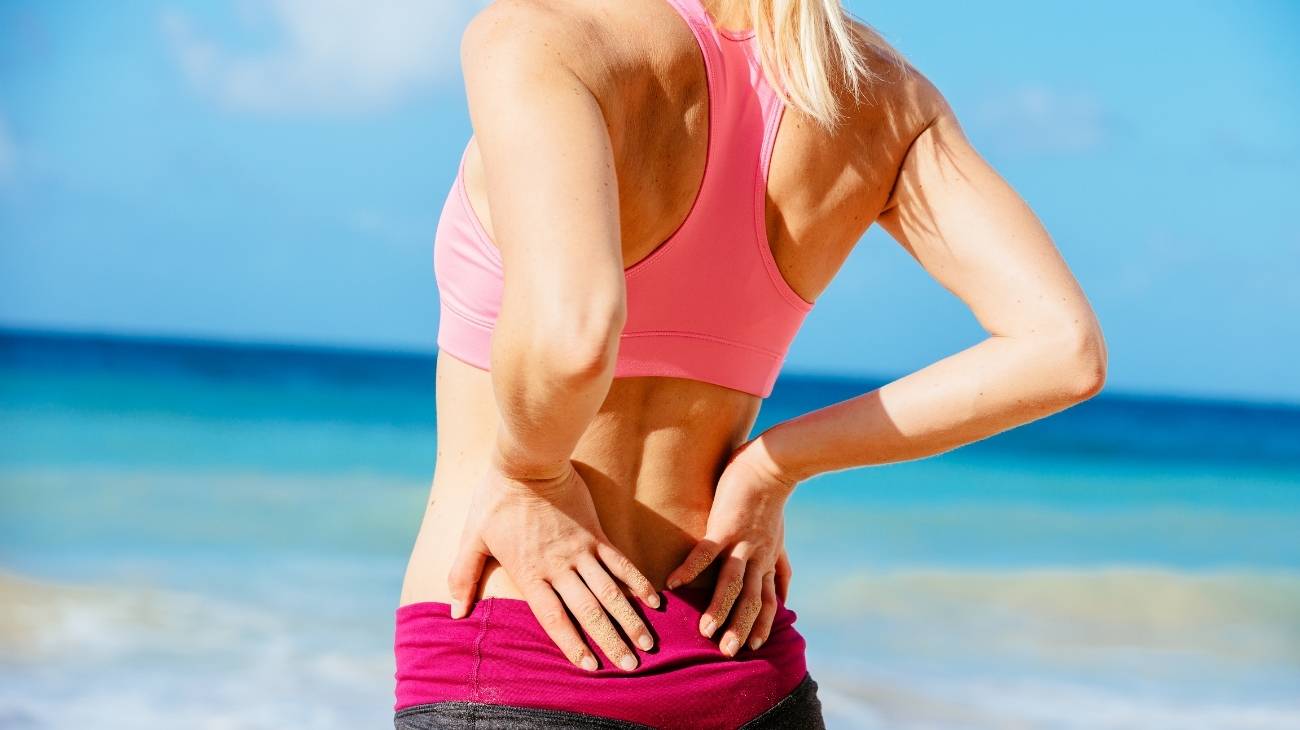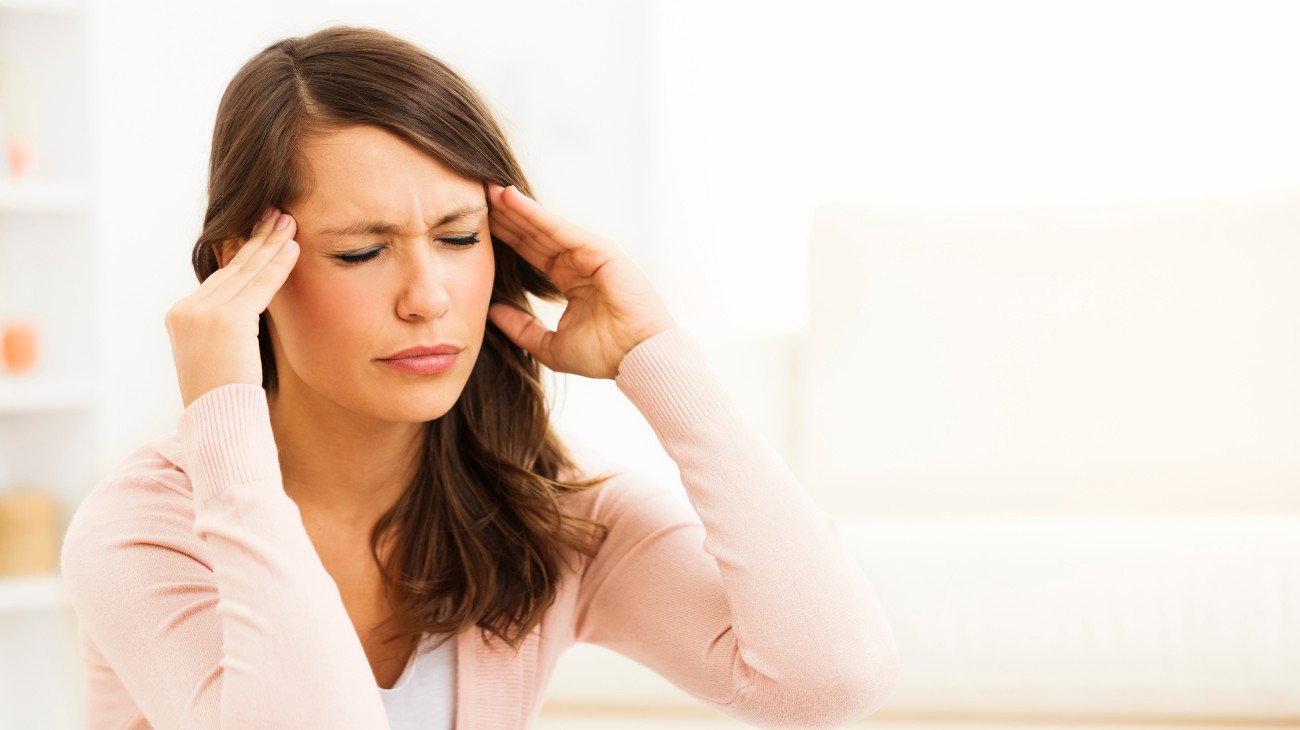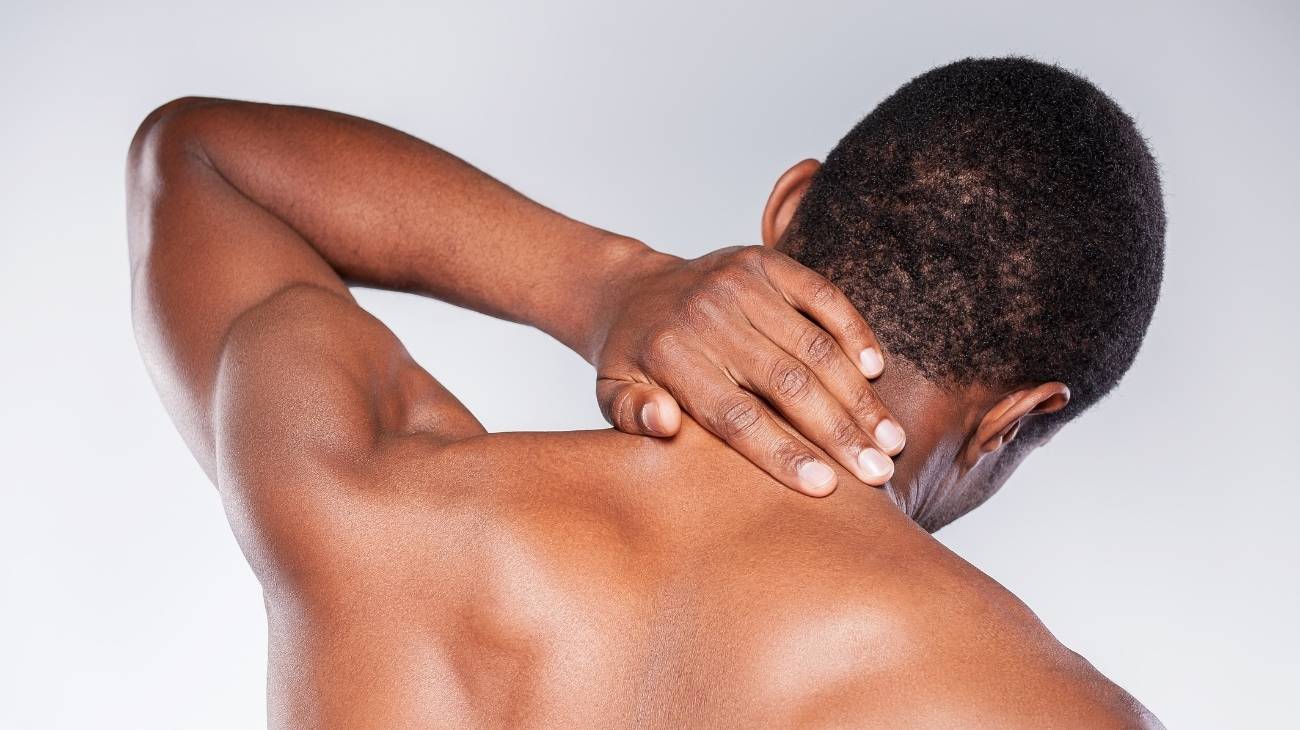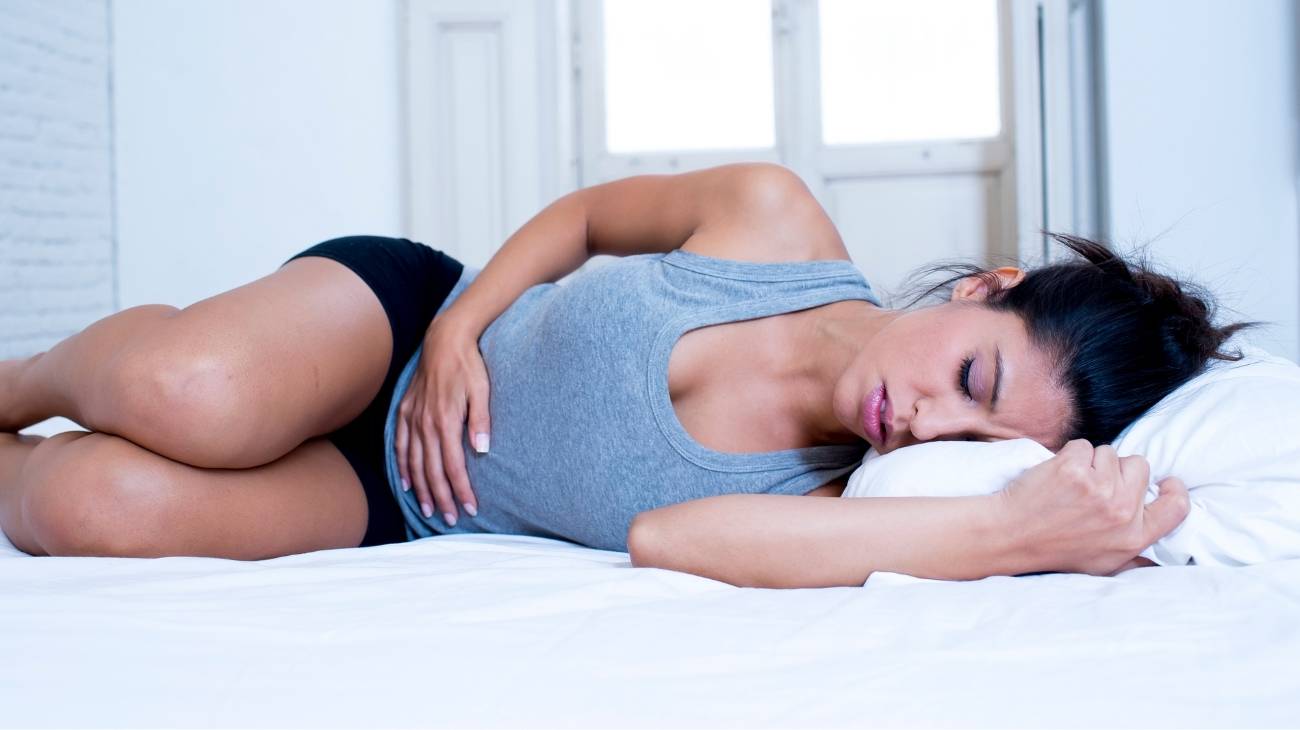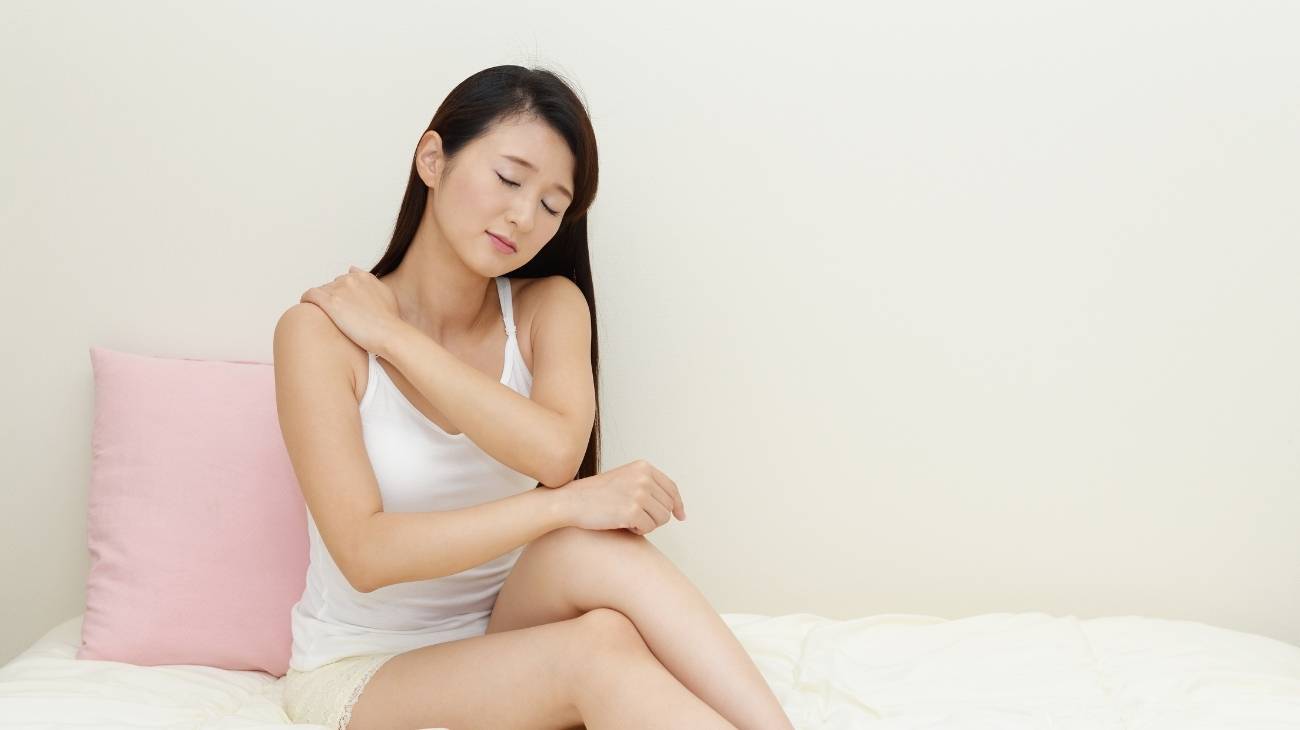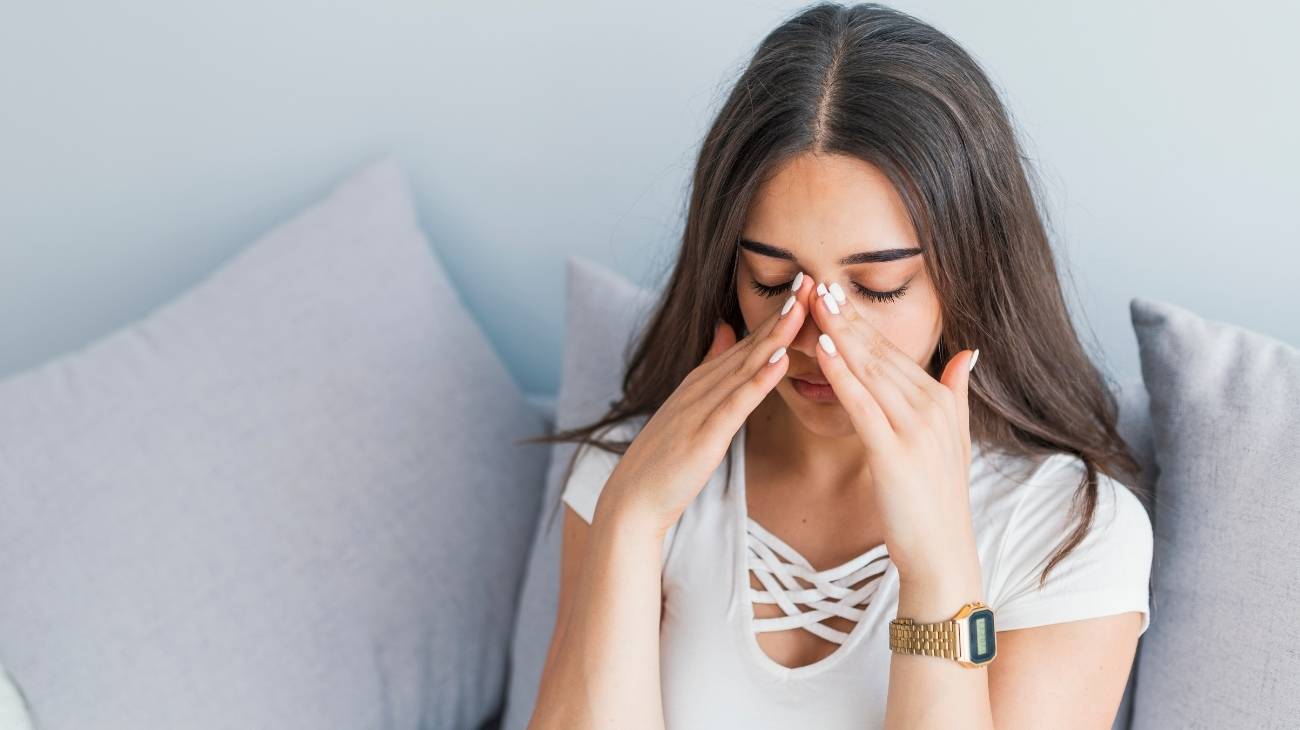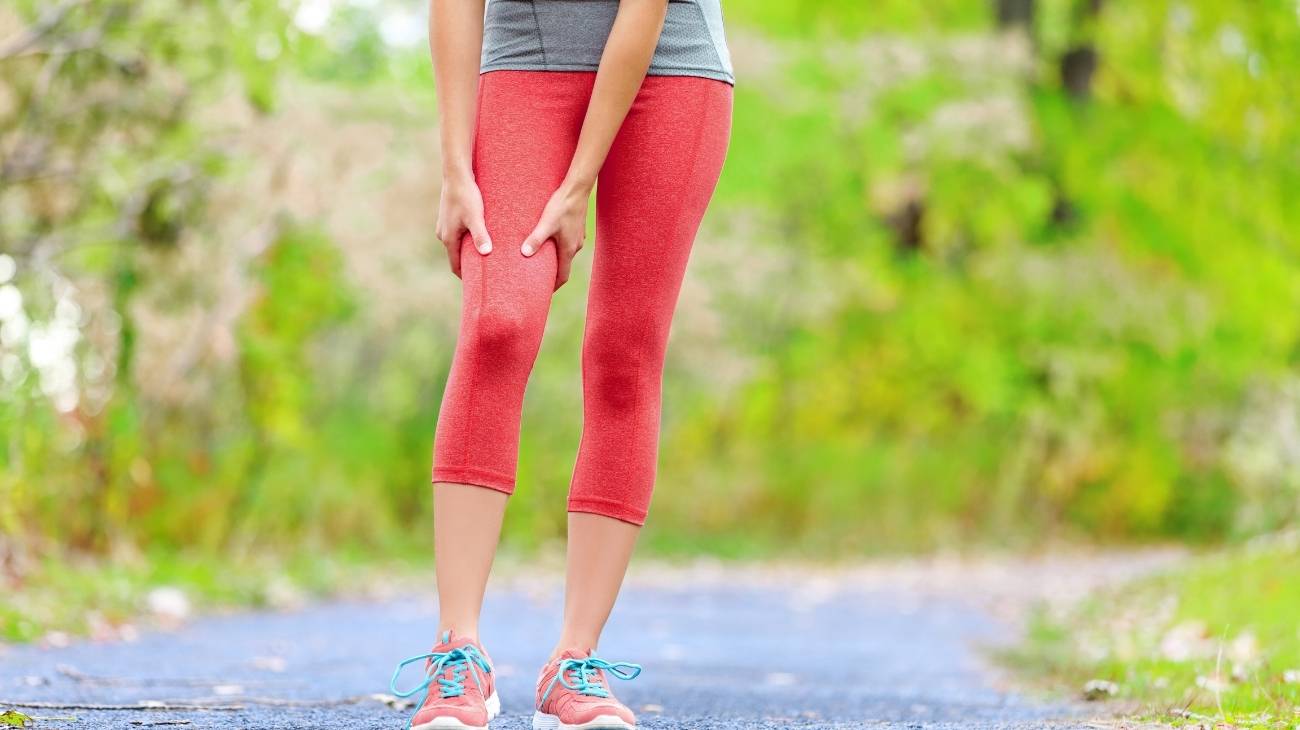- What is joint pain and how to identify it?
- Best products for joint pain relief
- What are the causes of joint pain?
- What kind of diseases can cause joint pain and inflammation?
- What are the symptoms and types of pain that make us think we have a joint injury in legs or arms?
- How can we relieve joint pain through complementary and non-invasive therapies?
- How to apply the RICE therapy step by step to reduce joint pain?
- How to prevent future joint pain in elbows, shoulders and ankles?
- Why should we avoid pills and injections to relieve joint pain?
Joint damage can be very serious, basically because of its long-term repercussions. It has immediate and temporary moderate or severe effects and others that appear over time but have no solution, or at least not in a simple or comfortable way. That is why, among other things, joint pain relief is so important.
Whether you feel discomfort now or not, you will certainly want to be informed about what joint pain is, how to take care of our bones, what the causes of joint discomfort can be, both diseases and other circumstances, what symptoms occur, what is good for joint pain, what are the most effective therapies and, of course, how they are applied and help to relieve bone discomfort.
What is joint pain and how to identify it?
Joint pain (arthralgia) is a discomfort we feel in the joint areas, which are those that join large bones at the bending points of our body. These are neck, shoulders, elbows, wrists, fingers, hips, knees, ankles, etc.
The discomfort can extend along the bones that connect with the joints and, similarly, can be caused by a problem in an area other than the joint itself (radiating pain), although it is true that the latter is not the most common.
In general, joint pain is a symptom of an impact on the joints or a pathology that directly affects them. However, there are occasions when the cause is, to say the least, extra-articular. It is accompanied by other symptoms, some the same and others different depending on the joint affected, and we also feel different types of pain depending on the circumstances.
Let's take a look at each area so that you can easily identify it and get relief from joint pain according to your symptom picture:
Joint pain in the neck
Although it is true that neck pain is usually the result of a tissue problem, we must not forget that this is also a joint, although a little more special.
Symptoms usually occur in the neck area itself, but considering the vertebrae, the discs and their union with the rest of the bones, this ailment can spread to areas such as the back (especially the upper back, upper arms and even the head). Perhaps this irradiation is the clearest way to identify joint pain in the cervical spine. Another common symptom is a tingling sensation in the arm.
It is very rare for this ailment to be caused by other causes, in other words, for it to be referred pain, although there are some cases, such as meningitis. Due to its function, which is to support the head, it is normal for pain to occur more and more as we get older, as there is a wear and tear on the joints, having to maintain the same weight and carry out the same movements as when our neck was in perfect condition.
Joint pain in the shoulders
The shoulders are a joint area in which referred pain is not usually felt. This means that the triggering situation has occurred in the joints themselves or in the vicinity, in areas with a direct effect on them.
They mainly involve discomfort when raising the arms, both forwards and sideways, or when doing warm-up exercises (doing shoulder circles). At rest or when doing simple tasks such as writing or tying your shoes, you may not feel any pain or only a slight discomfort.
Unfortunately, because of the importance of this joint, severe pain in the shoulder completely conditions the performance of many daily activities, although in others it is not the case. Fortunately, the pain is not usually acute and is very rarely caused by infection. If you haven't suffered a serious trauma, you won't notice a huge swelling either.
Elbow joint pain
Elbow pain can be more complicated. Usually, the bumps in this area are mild, a very strong discomfort but very short at the same time. However, if the discomfort persists, the reason may be that a rather unpleasant problem has occurred, such as a rupture of the synovial fluid sac in the elbow or nerve damage.
Also common are elbow infections, nerve problems or day-to-day ailments such as tennis elbow, golfer's elbow or student's elbow, which, once diagnosed at an advanced stage, cannot be cured.
Joint pain in the hands, fingers and wrists
Problems in this area are generally very common and the pain has a variety of causes. However, the most noticeable sign that you have a problem with pain in your hands, fingers or wrists is tingling, tiredness or burning. These are symptoms that should never be overlooked and are impossible to misinterpret.
In addition, if you have bone problems, you will experience stiffness and difficulty in the movement of the phalanges of the fingers as well as limitation when bending the wrist. It may have an injurious cause, although it is usual for these symptoms to appear with age due to other diseases, as well as an infection or bad habits.
Hip joint pain
Hip pain is difficult to identify because the hip is surrounded by other eggs and, above all, a lot of tissue, as well as not being an area as exposed as other joints. The sensation is very painful, it is difficult to detect the exact area that hurts, but it is obvious if the pain is clear, as there are not many joint groups here.
The main symptoms are difficulty in walking and even standing. The pain is strong in any position, even stabbing, and appears in other areas such as the knees or lower back. You may also experience swelling in the buttocks.
Knee joint pain
The knee joint is worn out by repetitive activities (work or sport). Wear and tear of the synovial fluid due to age is also very common. Of course, an impact can have negative consequences but this is not the most common, as the kneecap is large and very strong; it is more logical to have problems around the joint.
A clear way to identify knee pain is if you feel unsteady when walking or standing. Also, depending on the circumstance, there is difficulty in flexing or extending the knee joint. It is also an area that gets hot and red easily.
It is usually a dry pain when we are at rest and very sharp when flexing, especially if we have been sitting for a long time, forcing us to limp, however slight it may be; there is a big difference in pain at rest compared to movement.
Joint pain in the ankles and feet
A very common ailment, as all the reasons that affect the rest of the joints can occur in the feet, common causes are infections, illnesses, excess mobility, etc., and also sprains, dislocations and other problems due to the feet being an area with so much load.
The mobility of the foot is usually difficult to move to either side and it is one of the areas in which palpation is most effective when it comes to feeling pain, so there should be no room for error if we want to make our own diagnosis. It is also very common for the instep to be swollen and reddened.
The type of pain must be monitored, however, because, as it is such a delicate area, appropriate and timely treatment is crucial in order not to leave sequelae. Of course, we must not forget the typical gout pain, which first occurs in the big toe, and the discomfort can progress to the point where it practically prevents us from walking. The solution? Treat this disease as soon as possible and, if you are prone to it, take preventive measures.
Best products for joint pain relief
Bestseller
-
2 Elbow Compression Sleeve (Green/Navy)
£20,95 -
2 Elbow Compression Sleeve (Pink/Bordeaux)
£20,95 -
2 Knee Compression Sleeve (Black/Gray)
£20,95 -
2 Knee Compression Sleeve (Green/Navy)
£20,95 -
2 Knee Compression Sleeve (Pink/Bordeaux)
£20,95 -
2 Patella Knee Strap (Black/Gray)
£12,95 -
2 Patella Knee Strap (Green/Navy)
£12,95 -
2 Patella Knee Strap (Pink/Bordeaux)
£12,95 -
Microwave Wheat Bag for Back Pain Relief (Extra Large) (Hearts)
£24,95 -
Microwave Wheat Bag for Back Pain Relief (Extra Large) (Oxford)
£24,95 -
Microwave Wheat Bag for Back Pain Relief (Extra Large) (Sport)
£24,95 -
Microwaveable Wheat Bag for Pain Relief (Hearts)
£20,95 -
Microwaveable Wheat Bag for Pain Relief (Oxford)
£20,95 -
Microwaveable Wheat Bag for Pain Relief (Sport)
£20,95 -
Wheat Bag for Microwave Classic Bottle Shaped (Hearts)
£20,95 -
Wheat Bag for Microwave Classic Bottle Shaped (Oxford)
£20,95 -
Wheat Bag for Microwave Classic Bottle Shaped (Sport)
£20,95
-
2 Ankle Compression Sleeve (Black/Gray)
£20,95 -
2 Ankle Compression Sleeve (Green/Navy)
£20,95 -
2 Ankle Compression Sleeve (Pink/Bordeaux)
£20,95 -
2 Elbow Compression Sleeve (Black/Gray)
£20,95 -
2 Tennis Elbow Brace (Black/Gray)
£12,95 -
2 Tennis Elbow Brace (Green/Navy)
£12,95 -
2 Tennis Elbow Brace (Pink/Bordeaux)
£12,95 -
Ice Pack for Foot - Cold Therapy Socks (Black)
£20,95 -
Ice Pack for Foot - Cold Therapy Socks (Green)
£20,95 -
Ice Pack for Foot - Cold Therapy Socks (Pink)
£20,95 -
Microwavable Heated Slippers (Hearts)
£24,95 -
Microwavable Heated Slippers (Oxford)
£24,95 -
Microwavable Heated Slippers (Sport)
£24,95 -
Shoulder Support Brace (Black)
£24,95 -
Shoulder Support Brace (Green)
£24,95 -
Shoulder Support Brace (Pink)
£24,95 -
Sport Compression Socks (1 Pair) (Black/Gray)
£20,95 -
Sport Compression Socks (1 Pair) (Green/Navy)
£20,95 -
Sport Compression Socks (1 Pair) (Pink/Bordeaux)
£20,95
What are the causes of joint pain?
There are many reasons that can cause our joints to ache more or less temporarily or, if we already have a condition, aggravate it. The good thing is that all of the following causes can be easily solved.
When sleeping
It is not the most common thing for a joint to feel sore when sleeping, this is something more typical of the musculature. Obviously, a so-called "difficult" posture is going to make the whole body ache, bones included. In this case, the most common is pain in the wrists.
In cases where this occurs, it is if you suffer from arthritis or osteoarthritis, due to the cooling of the bone itself. The stimulation of the nervous system and the action of the adrenal glands are also responsible. In addition, and very importantly, in the case of rheumatoid arthritis it is related to cortisol, a hormone linked to circadian cycles. It must also be said that this is not only something specific to the joints themselves (other symptoms such as lack of appetite, insomnia, anxiety, severe tiredness, etc.).
Try to get at least 7 hours of sleep and do some stretching before going to bed; it is not necessary to have a big session, but simply to get your body settled in bed and to be able to go into deep sleep as relaxed as possible.
Bad posture
Both when sleeping and when awake , we can put our joints under pressure or keep them in an unnatural posture. For example, by crossing our legs, we sometimes place the supporting leg on tiptoe, changing the position of the toes, ankle and knee bones.
Also, slouching can cause the intervertebral discs to suffer and the vertebrae to become deformed, so that they no longer fit together fully, causing obvious and logical pain when trying to change posture. Other postures maintained for long periods of time would have similar results, with pain being the common symptom in all cases.
Stress and emotional causes
Like sleeping postures, stress and negative emotions are not a very common reason for bone pain. They do, however, cause muscle contraction, stiffness and lack of muscle motility.
However, it must be said, and this is very important, that stress can lead to flare-ups of arthritis (due to excess cortisol secretion), something that is not known and which, unfortunately, is one of the main reasons why people start to suffer from this disease.
The solution, obviously, is to look for the root cause of this emotional imbalance and to solve it as soon as possible; you will see that all the associated symptoms will gradually disappear.
Exercise and intense effort
Probably the most obvious reason why joint bones suffer is due to intense exercise and exertion. Letting our own weight fall, holding heavy loads that we are not prepared for, doing repetitive work (for example, those of a worker in an industrial chain) and these types of situations which, at first may seem harmless, end up producing joint wear and tear which, if not taken care of, becomes severe and irreparable.
The ideal is to know how far our body can go and to act accordingly. In addition, we must be proactive and keep ourselves in good shape by applying heat often, going to osteopathy or physiotherapy sessions, wearing clothes that provide support and compression, and of course, keeping our musculoskeletal system in good condition.
Menopause
One of the main and most obvious symptoms of the menopause (and also of the pre-menopause) is the weakening of our bone mass because we stop producing oestrogen quite abruptly. This leads to osteoporosis. In addition, it is also very common to put on some body weight. Also for hormonal reasons, the joints become inflamed in what is known as rheumatoid arthritis.
In this case, which cannot be fought, only aggravating factors such as smoking, alcohol consumption, excess weight, excessive thinness or poor diet can be tackled.
In pregnancy
Pregnancy itself means that our body changes and we lose physical capacities, not to mention the hormonal changes, which affect us in many aspects, and logically also affect our joints.
The main change is the increase in the physical load that is produced, which can range from 10 to 15 kilograms and which, on many occasions, far exceeds this figure. Our whole body, including our bones, has to make an extra effort to support this load. Genetic predisposition, previous illnesses or being overweight are important in this case.
In the case of hormones, it is important to know that hormones during pregnancy cause tissue weakness, including joint ligaments, which leaves women more exposed and every action of daily life more dangerous than it would be in the normal way.
Finally, it should be pointed out that fluid retention is also related to joint pain and this, of course, is much greater during these months. Where you will notice it most is in the wrists, but the solution is also simple, involving the use of a compression splint or wrist brace.
Food
Although it may seem incredible to you, diet will also affect joint pain. And we're not just saying that because you're overweight (although that's true too), which clearly affects the ankles first and foremost. There are certain foods that, by themselves, cause our body to store toxins, which end up in all sorts of places, causing both direct and radiated joint pain.
Change your oil to extra virgin olive oil, increase your citrus fruit intake, eat plenty of oily fish and wholegrain cereals and eliminate foods that raise uric acid levels in the blood.
Poor mobility
Here we would also include the point of pregnancy, because as pregnancy progresses, a woman's activity is reduced. Particularly affected is the pelvic ring and, in the last months of pregnancy, the ankles.
But it is not only pregnancy that causes your bones to ache, perhaps the biggest cause is a sedentary lifestyle. Staying still for long periods of time, for example, having an office job, or even standing as a security guard, sleeping too many hours, not doing sport and any other example of too little physical activity and sedentary lifestyles will cause your joints to suffer.
What kind of diseases can cause joint pain and inflammation?
Since there are several joints that we are going to treat, it is obvious that there will also be many diseases or pathologies that can cause them to ache.
Joint pain is almost always caused by a bone problem, hence its name. However, indirectly, it can also be caused by other problems that we will address so that you can have a clearer idea of their origin.
Arthritis
This disease consists of inflammation of the joints and is a symptom of various diseases (infections, gout, psoriasis, etc.) and autoimmune problems. Obviously, this causes a loss of mobility and the bones collide with each other, rubbing against each other, causing intense pain. It reaches the point of deformation and is common in the fingers of the hands.
Both treating the cause and working on the symptoms are necessary to make it go away. The latter includes thermotherapy and doing specific exercises to eliminate the pain, as well as other actions to improve the rest of the symptoms and the disease itself.
Arthrosis or osteoarthritis
In this case, the problem is that the joint is worn down to the point where its cartilage is damaged. This leads to pain, stiffness and poor or no function. It is common in the lower back, neck, shoulder and big toe. Genetics is not the main factor, but there is a certain tendency to suffer from it if it runs in the family. In addition, avoiding overweight, sedentary lifestyles and bad posture are the easiest and most basic prevention guidelines.
Osteomyelitis and other infections
This is a bacterial infection caused in the bones, although on other rare occasions it is fungi or other germs that are the culprits. They are usually spread by the ease of an ulcer or by the blood itself. Other infections, in this case viral, can also cause us to feel a very unpleasant pain, very different from the bone pain we are all familiar with.
This pain is accompanied by other symptoms typical of infections such as excessive sweating, malaise, restlessness, chills or fever. In this case, it is essential to treat the pathogens causing the infection with medication (except in the case of viruses, which are not affected). Removal of the damaged bone tissue and grafting may also be necessary.
Sprains
A sprain is an injury to the ligaments that surround and cover joints. The pain in the joint is caused by overstretching or tearing of the ligament tissue and partial or complete rupture. It occurs due to unnatural forced postures of each area, either due to falls, blows, etc.
There will also be swelling and bone stiffness. For this situation, the RICE therapy, which we will see later, is the most indicated, summarised in the application of cold, rest, compression and elevation of the area.
Fractures
A fracture is literally the breaking of a bone. It can be caused directly by an impact, but can also occur over time due to continuous overloading and stress on the bone tissue, which is weakened.
In the case of joints, the second reason is the most common but, of course, we can also fracture some of the articular ossicles when we injure ourselves, so we must not fail to pay attention when practising sport or at work to avoid these accidents.
Dislocation
Dislocation is the separation of the bones where the joint is located without them breaking. Thus, although they are in good condition (if nothing else has happened), they are not in place.
This is a problem that, if treated properly, has no long-term effects. However, it must be treated with care as it can be accompanied by lesions to other tissues and even to nerves and vessels, which are more difficult to cure. In addition, recurrence is higher once you have suffered a dislocated joint, hence the importance of prevention.
Bursitis and gout
The bursa is a bag filled with synovial fluid that is precisely placed so that we do not rub our bones, the bursa can become inflamed in the process known as bursitis. In addition, due to the logical movement, it appears more often in the joint areas, which are the areas that are used the most.
This inflammation causes pain, redness and stiffness. Of the different types, gouty bursitis or gout is the best known as it occurs in the first toe, although it is widespread, as we have already mentioned.
Synovial sarcomas
These are malignant tumours that can develop in the vast majority of soft tissues. The problem is when this occurs close to a joint area or when the sarcoma grows too large to affect it. Unfortunately, the treatment for this problem is surgery. So, the sooner it is detected, the sooner you will be able to relieve the joint pain and, of course, the pressure on the other adjacent areas will be relieved.
Neurogenic arthropathy
This is a disease caused by nerve damage that prevents us from feeling joint pain. Any overexertion and, of course, disease and injuries go unnoticed or may be minor, causing more and more damage each time until it reaches a point where there is no turning back, the situation being permanent destruction of the joint by simple deterioration.
Aseptic necrosis
Bones also have blood inside them and its absence, temporary or permanent, is known as aseptic necrosis. In itself, this is obviously serious as bone tissue needs blood or it dies. However, when the process occurs in an area close to the joint, its surface often collapses, causing great pain.
It is very important to prevent this pathology, as in addition to its seriousness, it also causes the affected bone to suffer from osteoarthritis, in a degenerative process. The high administration of corticosteroids together with tobacco and alcohol are the main causes of this disease.
Rheumatic fever
Rheumatic fever is a rather rare inflammatory disease caused by group A bacteria, which can affect the joints and the heart. This is one of those cases in which we say that a correct and early diagnosis is essential, because who would imagine that having to relieve the pain in your knees, for example, is because you had a streptococcal infection in your throat.
Fibromyalgia
It is a pathology that is difficult to explain in which there is a multiple symptom picture and which attacks different aspects. In any case, as you can imagine, two of them are generalised pain and sensitivity to touch, of course, in the joints among other main areas.
This is not a dangerous condition, but it is very uncomfortable. The most effective way known to date to eliminate it is to reduce stress so that it does not become chronic. Gentle massage as well as heat and stretching will reduce the physical symptoms.
Polymyalgia rheumatica
In this case it is not the bone or the synovial bursa that is inflamed, but the lining of the joint. This causes severe pain and keeps the muscles in areas such as the hips, shoulders and neck in a partially stiff or disabling state.
The cause is unknown. Treatment is with corticosteroids only, so treating the symptoms is essential if severe symptomatic symptoms are to be avoided. It is known to be more common in women and is more common from the age of 55 onwards as a general rule, so this compound may cause side effects due to the age of the affected person.
Tendonitis
This is a specific case as this ailment consists of inflammation of the tendons. It is true that if you move a joint close to a damaged tissue, you will feel pain, but it is not joint pain. The exception is if it becomes chronic and calcium deposits, affecting the joint area with pain as well as stiffness, weakness and difficulty in moving the shoulder or other joint.
Cancer
Like the latter ailments, cancer is not the usual reason for joint pain, but it is still a cause and should therefore be brought to your attention, as it is, in fact, not insignificant. We would, of course, talk about certain specific circumstances such as those in which the tumour is in an area close to the joint, if there are circumstances for it to spread to the bones or in the case of leukaemia, which is capable of clustering cells in the joint bones.
Lupus
Again, this is another disease whose main symptom is not joint disease. However, it does occur in 9 out of 10 sufferers (National Resource Center on Lupus). Furthermore, although joint pain is not the most common symptom, it is often the first symptom to appear.
Degenerative or chronic diseases
There are several diseases, both chronic and degenerative (the most notable in this case is osteoarthritis), in addition to those we have already seen, that end up having joint pain as a symptom. In these cases, the essential thing is to diagnose them in time and, if they have become chronic, take good care of the affected areas to alleviate the pain in the joints as well as the rest of the symptoms, so that you can go about your daily life normally.
What are the symptoms and types of pain that make us think we have a joint injury in legs or arms?
Although joint damage usually has very similar symptoms, it is important to know what they are in order to be able to make a better diagnosis.
Most common types of symptoms
- Pain: We have already seen that pain can be acute or chronic (the latter in degenerative diseases or poorly cured problems). Although its intensity, logically, is different, it is usually moderate or severe due to the type of area affected, so complex on many occasions, as well as the fact that it is a point of constant action. It can also radiate depending on the pathology suffered and its severity. As you can imagine, the joint pain, as well as obviously occurring by palpation, is very likely to occur when resting or making simple movements.
- Inflammation: It appears due to many of the causes of joint pain, especially those related to impacts as well as bone deformity. Even so, if this is not the case, you will be able to feel the area more dilated than usual simply because the tendons have torn too much, for example, and are the real cause of the inflammation.
- Feeling of heat: Because of the severe impact and inflammation, our own body may defend itself by raising the temperature of the area. This is very normal if you have swelling, but not so much if you do not.
- Redness: The rise in temperature brings with it a more vivid, generally reddened skin colour. This can also be due to damaged capillaries or overly damaged tissues. The greater the change in skin colour, the more serious the problem, whatever the problem.
- Stiffness: Stiffness is more common in bone disease than in accidents per se. However, it can also occur in cases such as dislocations or when immobilisation or rest is too exaggerated. Of course, after hours of non-movement the area will also feel stiff (and hurt more).
- Reduced movement: Both the nature of your problem and the pain will cause your range of motion to be reduced. You may hardly notice it or even be able to perform actions such as lifting an arm or rotating your wrist.
- Joint instability: Obviously, there are cases where the ligaments that support the joint bones or the joint capsule are affected. If this is the case, it is common that your pain is accompanied by acquired hyperlaxity that causes your joint structure to be unstable.
- Others: We have already seen in each pathology that there are some that are quite specific and that may only occur when suffering in a particular circumstance. However, it is usual in these difficult areas that the pain is caused by the symptoms we have just listed.
Types of symptoms according to the area
Although the joint area is not really important when it comes to feeling pain, since this is shown quite clearly, we must remember that there are symptoms that can occur in any of them and others that are much more specific to even single parts.
- In the knee: Pain in the knee is usually quite dry if the bursa or joint capsule as well as the small surrounding joint parts are not affected. In these cases we will notice very clearly a pain that is identified in the knee. In addition, it is an area that can easily become numb if left immobile for too many hours (it is curious that sleeping in the foetal position can cause great pain even if there is no problem) and can be affected by radiating pain.
- In the elbow: A very sensitive area to stabbing, stinging pain, prone to infections and syndromes due to repetition and which, in addition, radiates its pain along the arm.
- Hands and wrists: Without a doubt, this is where the existence of articular bone diseases and pathologies is most evident visually. The damage is not usually severe but it is disabling due to the fact that you lose control over the small joints, so that you cannot do precision work. It is normal for the hands to feel overly tired, tingling and even a burning sensation to occur even at complete rest.
- In shoulders: Shoulder pain is not particularly painful if you have not suffered a major impact. What it is is limiting, considerably reducing the range of movement and thus preventing us from leading a normal life. For the same reason, other symptoms such as inflammation, heat, etc. are rare, as it is not a preferred area for infections or other more complicated conditions.
- In the ankles: Crunching in the ankles is very common when there is a problem in the area. This is the area most prone to a wide range of symptoms, from swelling to stiffness, acute or chronic pain, throbbing, burning, numbness, difficulty walking and even bruising.
- In the neck: Having joint pain in the neck and upper back can lead, depending on the pathology, to headache and muscle pain in the back and shoulders as well as general discomfort and postural and sleeping difficulties. The pain is usually more acute in this area if it is the result of an injury, as the bones are much weaker and, in comparison with others, have a greater load, which means more wear and tear. It is likely to be caused by nerve damage.
- In the hip: The pain is strong, possibly stabbing, maintained in almost any position, but is very clear in the case of bone pain. There will be difficulty in walking, with limping and, in general, in pelvic movement. You may notice pain in nearby tissues by extension and even fever.
How can we relieve joint pain through complementary and non-invasive therapies?
When treating bone problems, it is important to be very careful, as these are, although it may not seem so, very weak and a bad movement or a bad decision can lead to something very serious.
Hot and cold therapy
Recent studies recommend immersing the joints in alternating low and high temperatures, improving joint pain, especially at bedtime, when it is most evident.
Just hold a cold gel pack for half a minute on the affected joint and then quickly switch to heat, using microwavable heat packs. Repeat up to five times before going to bed so that when you go to bed you will notice the effects.
This contrast therapy acts by reducing chronic or focused pain, nourishing the bone tissue and improving capillary flexibility, favouring the activation of the articular system.
Thermotherapy
During pregnancy, avoid contrast therapy and simply replace it with heat therapy. This therapy is very simple and consists of simply applying some heat to the painful areas. You can do this with wet cloths, a water bag, an electric blanket, heat packs or steam baths.
The point to consider when using thermotherapy is that it is totally contraindicated for acute pain processes. This means that it will only be useful to apply it some time after suffering the injuries (more than 72 hours), when there is a chronification or in cases of certain illnesses.
Cryotherapy
Cryotherapy will always be effective in relieving joint pain when the damage is of an acute nature. That is, when it has just occurred immediately (between 24 and 72 hours), when an inflammatory process is taking place.
Get cold with cold compresses, cold gel packs or simply by soaking in ice-cold water, you will notice immediate improvements. Do not overdo it with the low temperature or the exposure time. The lower the temperature, the less time you should undergo this therapy, as you may suffer from side effects such as numbness or other side effects.
Compression therapy
The use of compression garments for joint pain can sometimes be beneficial, especially if you feel instability or weakness, whether in the knees, ankles or elbows. There are many types of compression garments suitable for these conditions, such as knee, elbow or ankle compression braces.
Choosing the right size and level of compression is essential for these types of garments to have an effect and help us to improve our ailment. If the garments are too tight, they will cut off the blood circulation and if they are too big, they will not have a compressive effect.
Massage therapy
Massage is not the best solution for relieving joint pain but, of course, it can help in a number of ways. Rather than massage, especially in the first few sessions, we would speak of gentle kneading of the area, repositioning of the tissues and relaxation. This calms inflammation by improving circulation.
Acupressure therapy
There are many points that serve to reduce pain in a generalised way. On this occasion, we would like to suggest that you focus on foot and manual reflexology, which is nothing more than the application of acupressure on the feet and hands.
- On the feet there are many points that will help to soothe the damage to the joints, such as 1H and 1H on toe 1, 45E on toe 2, the entire E branch on toe 3, point 44VB on toe 4 and 67V on toe 5.
- For the hands, we can take advantage of the benefits of the points 1P on finger 1, 1IG on finger 2, 9MC on finger 3, 1TR on finger 4 and the points 1ID and 9C on finger 5.
To perform acupressure therapy, you only need to press them constantly, making circles or rubbing the points as appropriate in each one (this knowledge corresponds to a professional in the field).
Other effective alternative therapies
- Natural remedies using plants: A good plant to make an infusion and relieve joint pain is fresh ginger as it is an excellent anti-inflammatory. If you add honey, you will see that this effect is multiplied as it prevents inflammation. Other foods with this property are horsetail, turmeric or flaxseed. On the other hand, rosemary can be used in plasters and hot water immersions.
- Acupuncture: The therapy, as you can imagine, claims the ability to reduce joint pain, although it does not do so in a really specific way. There are points to reduce general pain and others for bones. A couple are, for example, the determination bone (behind the ear) or the point right in the centre of the back of the knee. Thin needles should be attached to these points in a session that will increase the pain to be endured over time while working on the specific physical points and meridians.
- Osteopathy: This is a treatment part of physiotherapy specifically for working on the bones, so in effect it will help greatly in relieving joint pain. A session, and a treatment for you, will be almost completely personalised, always looking for the balance of the leather, which is seen as a whole. In this case, seek out an expert in structural osteopathy, who, in addition to relieving the obvious symptoms, will look for the root cause to achieve permanent relief.
How to apply the RICE therapy step by step to reduce joint pain?
The RICE therapy is known worldwide for being the first medically valid procedure applied to improve many of the situations that cause the joint pain we are talking about. It has now been subtly modified to be called the PRICE therapy, which is the one we are going to explain to you.
The steps to follow are as follows:
- Protection: Start by protecting the painful area. This will depend on what has happened and the condition of the joint. Sometimes it will even be necessary to artificially encapsulate the elements that make up the joint in order to maintain it. Also included here are the simplest restrictions and movements and any practice that can protect us until a professional dictates the guidelines to follow.
- Rest: If we have had any problems recently, it is advisable to rest. However, you should not do so completely, otherwise you will be favouring stiffness and subsequent pain by acting "cold". We simply need to take things more calmly, avoid excesses in the affected joint, take care of it in the appropriate way as dictated by your doctor and, whenever possible, take breaks if you do long activities.
- Ice: It is important to emphasise that cold is only beneficial for acute situations because it is analgesic, acts on the nerves, reduces blood flow, etc. If this is not what we need, we can do ourselves more harm than good. Simply place something cold on the affected joint and this will reduce the inflammation as well as have a numbing effect, which considerably reduces the damage.
- Compression: By compressing the area we control oedema, swelling, instability, etc. This helps to prevent further pain or functional impotence. There are many known techniques and they depend, of course, on the area to be worked,
- Elevation: In your moments of rest and, in general, whenever possible, keep the affected joint above the horizontal of your heart. In this way, you ensure that the pressure does not increase and thus that the area does not swell again or become over-inflamed, with all that this entails.
How to prevent future joint pain in elbows, shoulders and ankles?
Prevention is the best solution to a problem like this. As we have been saying, joint pain is not a joke, it is incident, acute, can become chronic, is very uncomfortable and greatly limits our day-to-day life.
Check out the following list to prevent joint pain:
- Compressive clothing: Use compression garments or bandages to compress painful areas. This will keep the tissues firm and prevent joint instability. Look for comfort and cushioning, use the right size and fabrics for the activity you are doing.
- Preparing for activities: Prepare properly for any activity you are going to do that requires joint stress. This can be sport (jogging, weight lifting, etc.) or simply repetitive tasks at work. Warm up, stretch and activate your body before starting the activity.
- Sporting activities according to our capabilities: Suffering from joint pain is not a reason to stop practising sport. In fact, it is always recommended unless you are in an acute and dangerous phase. What you have to do is choose those activities that are in accordance with your abilities at any given moment and, as you improve, increase their complexity and intensity. As well as not being harmful if done well, exercise is beneficial for aspects such as stiffness, improved bone strength or pain relief itself.
- Other activities: Of course, don't neglect all other activities, from your own profession to those that correspond to your hobbies. Pay special attention to those that are repetitive, as they are the ones that are going to wear out part or all of a sac, capsule or area of a bone.
- Hygiene and postural health: Be careful with your posture, they all matter. Don't just look at walking with a straight back, there is much more to it. From breathing to the movement of the legs if we sit for long hours to the posture we take when we sleep or where we rest our arms counts,
- Rest: Don't abuse the concept of rest or rest if you feel unwell. These should never be total unless you have a break or a serious pathology. Go about your day but take short breaks so as not to overload your joints when you are using them continuously. When it's time to rest, don't hesitate to use the necessary elements, such as cushions.
- Preventive heat and contrast therapies: Heat and cold therapy is not only suitable for the moment when you are in pain. The same applies to heat when we are simply trying to take care of the area without acute pain. It relieves tension in the joints and other tissues.
- Diet: Your diet should include vitamins A, C and D, calcium and macronutrients such as protein. Drink water and foods rich in nutrients and avoid alcohol. Artichokes, carrots, peppers, extra virgin olive oil and citrus fruits should not be missing in your kitchen. If necessary, take multivitamin, collagen and hyaluronic acid supplements, which help to improve joint structure and capacity. Choose vegetables such as bamboo, ginger, turmeric, etc. In any case, in conjunction with exercise, avoid being overweight.
- Maintenance exercises: There are range-of-motion, aerobic, strengthening and other activities that a professional physiotherapist or personal trainer can recommend on a personalised basis.
- Maintain a healthy routine: Get at least 7 hours of sleep during the night, enjoy free time away from home, take time for yourself, be in contact with nature, etc. In short, feel fulfilled by following a routine that you maintain and that is healthy and does not undermine your health.
- Reduce stress: Stress is an aggravating factor in many ailments, including bone and, as we have already seen, joint ailments. It is also to blame for other problems that can lead to it. Get psychological therapy, get massages, do yoga exercises at home, etc.
Why should we avoid pills and injections to relieve joint pain?
It is true that seeking out joint pain is sometimes a pressing issue, as it can become unbearable. Sometimes even injections are used to reduce the pain. However, we could not be more against these practices.
We have already seen that there are other ways to reduce joint pain that do not require drugs, so we always advocate that we leave the use of these drugs to treat diseases and other much more severe symptoms.
Besides, any drug has side effects, which no one wants in their body. But we have already seen that, in the case of trying to relieve joint pain, there are circumstances in which they may be even less desirable, such as pregnancy, for example.
Not to mention the risks of self-medication. Although there are seemingly harmless, very basic, broad-spectrum drugs, they may not be suitable for you because of how your body responds, the pathology you suffer from, and so on.
Finally, remember that if your pain is excessive, the best thing to do is to see a medical expert. It may be that this symptom is more serious and you are delaying its diagnosis by taking medication on your own.
References
- Schaible, H. G., Richter, F., Ebersberger, A., Boettger, M. K., Vanegas, H., Natura, G., ... & Segond von Banchet, G. (2009). Joint pain. Experimental brain research, 196, 153-162. https://link.springer.com/article/10.1007/s00221-009-1782-9
- Kidd, B. L. (2006). Osteoarthritis and joint pain. Pain, 123(1), 6-9. https://journals.lww.com/pain/Citation/2006/07000/Osteoarthritis_and_joint_pain.3.aspx
- McDougall, J. J. (2006). Arthritis and pain. Neurogenic origin of joint pain. Arthritis research & therapy, 8, 1-10. https://link.springer.com/article/10.1186/ar2069
- Aprill, C., Dwyer, A., & Bogduk, N. (1990). Cervical zygapophyseal joint pain patterns. II: A clinical evaluation. Spine, 15(6), 458-461. https://europepmc.org/article/med/2402683
- Haskin, C. L., Milam, S. B., & Cameron, I. L. (1995). Pathogenesis of degenerative joint disease in the human temporomandibular joint. Critical Reviews in Oral Biology & Medicine, 6(3), 248-277. https://journals.sagepub.com/doi/abs/10.1177/10454411950060030601
- Jones, S. M., Armas, J. B., Cohen, M. G., Lovell, C. R., Evison, G., & McHugh, N. J. (1994). Psoriatic arthritis: outcome of disease subsets and relationship of joint disease to nail and skin disease. Rheumatology, 33(9), 834-839. https://academic.oup.com/rheumatology/article-abstract/33/9/834/1782150
- Panush, R. S., Schmidt, C., Caldwell, J. R., Edwards, N. L., Longley, S., Yonker, R., ... & Pettersson, H. (1986). Is running associated with degenerative joint disease?. Jama, 255(9), 1152-1154. https://jamanetwork.com/journals/jama/article-abstract/403120
- Still, G. F. (1897). On a form of chronic joint disease in children. Medico-chirurgical transactions, 80, 47. https://www.ncbi.nlm.nih.gov/pmc/articles/PMC2036674/
- Nesic, D., Whiteside, R., Brittberg, M., Wendt, D., Martin, I., & Mainil-Varlet, P. (2006). Cartilage tissue engineering for degenerative joint disease. Advanced drug delivery reviews, 58(2), 300-322. https://www.sciencedirect.com/science/article/abs/pii/S0169409X06000202
- Roux, C. (2011). Osteoporosis in inflammatory joint diseases. Osteoporosis International, 22, 421-433. https://link.springer.com/article/10.1007/s00198-010-1319-x

